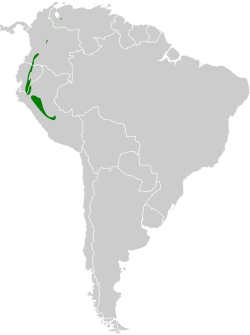| Orange-eared tanager | |
|---|---|
 | |
| Scientific classification | |
| Kingdom: | Animalia |
| Phylum: | Chordata |
| Class: | Aves |
| Order: | Passeriformes |
| Family: | Thraupidae |
| Genus: | Chlorochrysa |
| Species: | C. calliparaea |
| Binomial name | |
| Chlorochrysa calliparaea (Tschudi, 1844) | |
 | |
The orange-eared tanager (Chlorochrysa calliparaea) is a species of bird in the family Thraupidae. It is found in Bolivia, Colombia, Ecuador, Peru, and Venezuela. Its natural habitat is subtropical or tropical moist montane forests.

